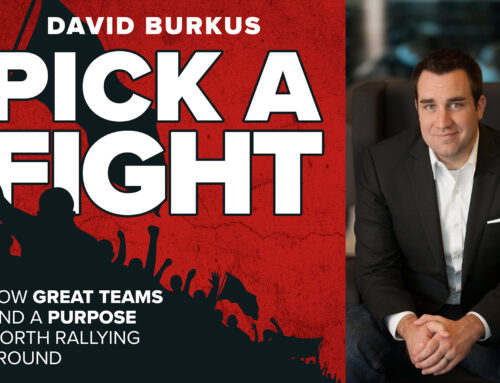I wanted to like these books, I really did. I’m grateful for any good new ideas about public speaking wherever they come from. But unfortunately, both The Exceptional Presenter, by Timothy J. Koegel, and There’s No Such Thing as Public Speaking, by Jeanette and Roy Henderson, are not useful additions to the lore. The first book is a hodge-podge of tips taken from earlier work, some of them now outdated and even wrong. The second at least contains an original theory, but actually following it would cause speakers to do things that would alienate their audiences. The authors claim to be the coaches for President George Bush. Hmmmm.
Keogel begins by exhorting us all to be exceptional speakers. Apparently the way we are to do this is to "tell ’em what you’re going to say, say it, then tell ’em what you said." What Koegel doesn’t seem to realize is that this speaking model came from the US Army in World War II. The Army needed a way to indoctrinate quickly large numbers of people of wildly varying educational backgrounds and abilities in some fairly straightforward information. And they needed a way of making sure that there was some uniformity in the way all the information was put forward in many different locales.
The Army hit upon repetition as the way to achieve these two ends. They didn’t care much about making the experience a great one for speakers and audiences.
We did win the war, but not because public speaking in the Army was exciting or even especially good. Unfortunately, the officers that survived the war came home, went to work, and infiltrated the business world with the mistaken idea that public speaking was basically a matter of shouting orders three times.
No wonder most public speaking is so bad.
To continue to use this method of presenting when we know so much more about what works is pernicious. Thanks to 40 years of communications research since the early 1970s (and the great founders of modern communications work, Albert Mehrabian and Ray Birdwhistle) we know that people receive communications on two levels, content and non-verbal communication. It’s what I call the two conversations. If you don’t pay close attention to both ‘conversations’, the verbal and the non-verbal, you won’t be able to communicate effectively, because, as Mehrabian found, when the two are not aligned, people believe the non-verbal every time.
Koegel both mispells Mehrabian’s name and misrepresents his work (cf. p. 14). That’s unfortunate, because his insights can tell us a lot about public speaking and what we need to do to succeed at this difficult art. Suffice it to say that the famous 55/38/7 study did NOT show that most of your "impact" as a speaker comes from "the visual," as Koegel wrongly claims. What it DID show was that people decode the EMOTIONAL content of a communication mostly using visual (55%) and auditory (38%) cues, such as hand-waving and an angry tone to indicate anger, rather than the actual content of the words themselves (7%).
I could list a dozen other examples of how Koegel gets things wrong, but one will have to suffice. In a section on gesture, he talk about one that he says "can and should be used often." (p, 74). He calls this gesture the "claw." It’s the gesture you use when you’re trying to get a dog or a child to stop jumping on you. The palms are open, facing downwards, and you ‘push’ them down to stop behavior you don’t want or like.
Since most speakers are trying to increase the strength of the connection between themselves and the audience, using "the claw" often is a sure way to fail. It will have the effect of making the audience think you either want them to stop jumping on you, or you don’t have anything important to say.
The other book, There’s No Such Thing as Public Speaking, has the virtue of thinking systematically about public speaking, rather than just collecting tips from others. Unfortunately, the system the authors come up with is just plain weird. If President Bush has been using it, a lot becomes clear.
The authors recommend that you begin by Acknowleding the audience. Then, you must try for Acceptance by uttering an "Irrefutable Statement" (p. 33). Is this why President Bush has an annoying habit of stating obviously wrong ideas as if his audience would be stupid to argue with him?
In any case, you then give your case, and ask for an action. A simple, three-step process, say the authors. No wonder Bush’s approval rating is so low.
If only it were that simple.
Elsewhere, the authors make a 5-page farrago out of something that should be kept simple — turning from one side of the podium to the other (pp. 75-80). By the time most readers are done with that section, they’ll be afraid to ever move again.
There are bits of good advice in this book. The authors talk at length about how important pauses are for good speaking, and I can only agree. They talk about how essential authority is for speakers, and it is, but unfortunately their explanation for how to achieve it is labored, incorrect and based on bad research. They stress the importance of making an entrance, and I agree, but again, the ‘how’ is not well explained. If everyone took their advice, "walk slowly and deliberately to the lectern," we would begin to think that all public speaking was funereal.
The main problem with this book is that it ignores the audience, which is where the focus in public speaking should be. After all, if the audience hasn’t heard you, you haven’t communicated and everyone’s time has been wasted.
A bit of advice in closing: never buy a book on public speaking if there is a chapter in it entitled, "the microphone," or "natural." The first will be too specific about the wrong things and the second will be too vague about the right things.








Leave A Comment